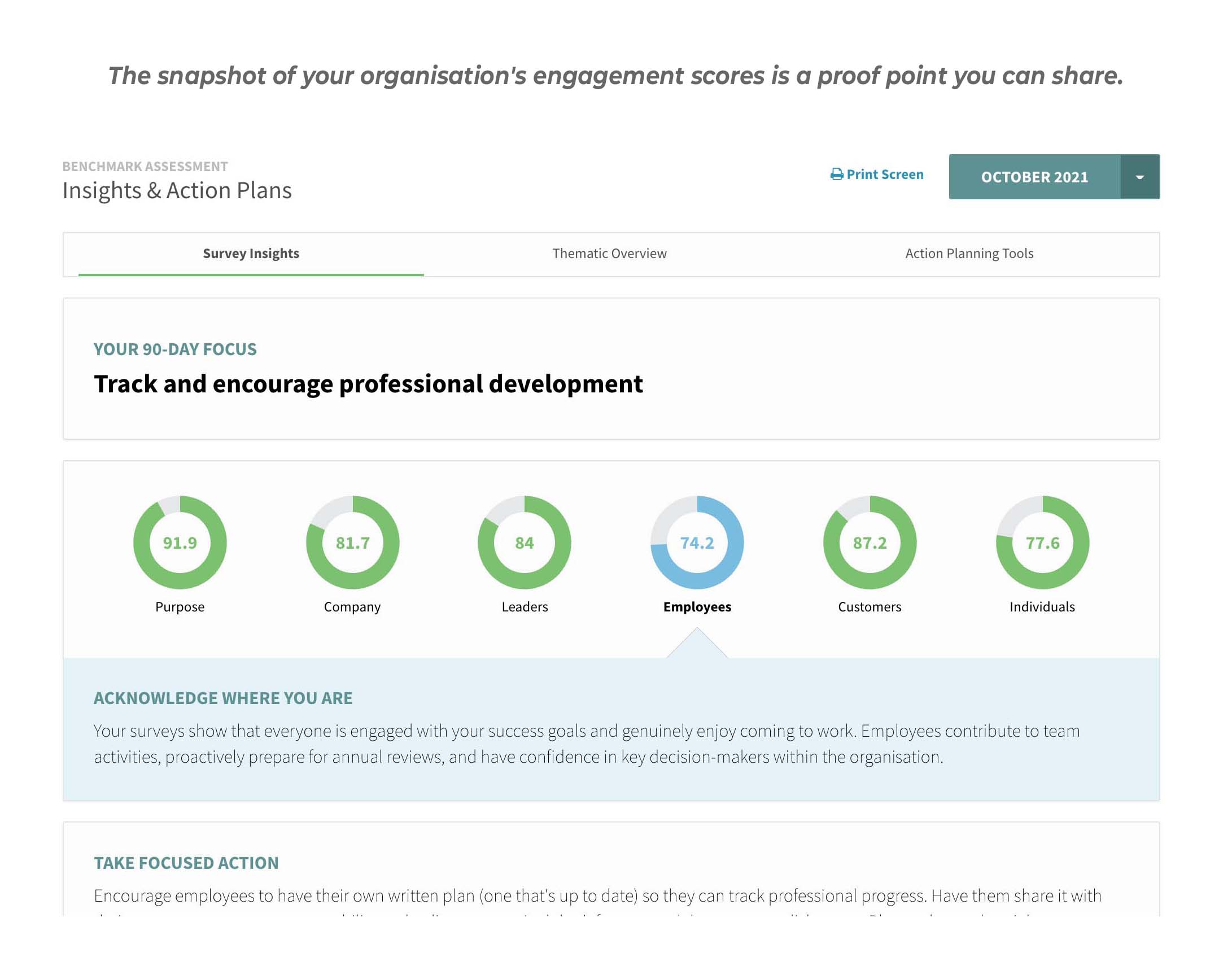If you’re within sneezing distance of sales and marketing at your organisation, you’ve undoubtedly heard references to “the value proposition.” A good value proposition is a succinct summary of why a buyer should select a product or service.
Working up a good value proposition takes some doing. It requires one to inspect all the reasons why someone should choose what’s being sold, and narrow it down to the most compelling and unique reasons. Importantly, the notion of “value” forces one to consider the buyer’s perspective in terms of what they need, and how they benefit.
I’d be willing to bet that most leaders can rattle off the value propositions describing their brands or services.
But can they do the same for their organisation’s employee value proposition?
It’s a good question to ask right now, given the widespread challenges employers are having right now, both in terms of retaining people and hiring new staff.
What is an employee value proposition?
An employee value proposition is a summary of the value a company offers to employees in exchange for the value they bring to the organisation. However, it’s more than compensation and benefits: according to research from Gartner, important elements employees consider when evaluating employers include compensation, work-life balance, stability, location, and respect.
It’s a good idea to identify the value your organisation offers employees, and develop a summary with supporting details and proof points, for use both internally and externally.
“Internal marketing around your employee value proposition serves to re-recruit staff, reminding them why they joined, strengthening their commitment to stay, and prompting them to refer others to the company,” notes Sarah Jensen Clayton in her article for Harvard Business Review titled, “How to Strengthen Your Employer Brand.”
Externally, the value proposition can be an important tool for recruiting – especially if the summary statement is backed by details, employee quotes, and supporting statistics. In the marketing realm, the value proposition is meant to differentiate the brand from competitors. The employee value proposition can play a nearly identical role for the brand in the job market.
Why an employee value proposition is important
An employee value proposition should speak to all employees – current and prospective. It also needs to accurately reflect the lived experience of your employees.
“A strong employer brand also relies on the input and voice of existing employees. Without that feedback loop in place, you run the risk of creating an idealised employer brand that does not reflect what happens once an employee signs their offer letter and emerges from the onboarding process.” – Glassdoor, “What Happens When Your Employer Brand Doesn’t Match the Employee Experience?”
This is worth paying attention to, as a global survey by Weber Shandwick and reported found that only 19% of the nearly 2,000 global employees surveyed felt strongly that the work experience their employer promotes publicly is matched by reality. Put another way, what employees saw on the company’s social media channels or careers sites was inconsistent with what they saw on external career sites and their company’s social channels. It should go without saying that this dichotomy isn’t missed by candidates, who are armed with insights and candid employee perspectives easily found on sites like Glassdoor, Indeed, Reddit, and Fishbowl.
Authenticity always matters, your employee value proposition is no exception. And external reputation aside, there’s another reason why developing an honest value proposition that’s aligned with the lived employee experience is important: it can become a measurable and visible way to communicate the organisation’s commitment to its employees and their experiences at work, and a way to benchmark leadership’s efforts at improvement.
How to create a value proposition for employees
There are a few elements to consider including when you start drafting your employee value proposition.
- The organisation’s culture and “personality.” Understanding what the organisation is, rather than what it aspires to become, is extremely important. For example, a process-driven organisation that values its systems and methods may not be a great fit for an entrepreneurial spirit that loves to innovate and solve problems. Even if the organisation aspires to become nimble and innovative, the in-house experience of process rigor won’t feel right to a new hire that was promised the ability to innovate.
It’s within this category the company’s stance on factors such as respect, recognition, and work-life balance should be conveyed, as well, and the descriptive language needs to align with the lived experience of employees.
- The key factors high-performers seek in their employers. High-performing people – regardless of their experience or level, are motivated by more than salary and tend to seek out employers with talented leadership, strong culture, and growth opportunities McKinsey breaks this down into four dimensions:
- Great leadership that’s inspirational, supportive, and focused on development
- Great company that has a track record of good results, a healthy culture, and is a positive contributor to society
- Great job that combines the opportunity for growth and advancement with purpose and meaning
- Great rewards, meaning in addition to salary and benefits, the company offers other perks and nonfinancial recognition.
- Your purpose and values. Purpose matters to people, and the majority look to their employers as a means of achieving purpose in their lives. In fact, according to a recent report from McKinsey titled “Help Your Employees Find Purpose, or Watch Them Leave,” employees at all levels in the organisation say that they want purpose in their lives, to the tune of 89%. Additionally, 70% of the employees surveyed said that their sense of purpose is largely defined by work. What does this mean for employers? A lot, McKinsey found. Those employees who were less satisfied reported lower average work and life outcomes than more satisfied peers did—everything from reduced feelings of energy and life satisfaction to lower engagement, satisfaction, and excitement about work. The report’s authors noted that negative work and life outcomes for employees inevitably translate to negative outcomes for the business.
The most effective value propositions are more than a written statement from leadership. Incorporating the voice of your employees is a crucial element, providing a “proof point” that’s more relevant and relatable to the audience.
Providing a view of what life is like as an employee of your organisation, highlighting the key elements of your value proposition, will resonate with your audiences, internal and external. Good examples of value propositions that include a heavy dose of the employees’ perspective can be seen from Hubspot, Tesco, and Softwire to cherry-pick just a few.
Other proof points you can use to illustrate the depth and veracity of your employee value proposition include:
- Your employee engagement report data. If you use Engagement Multiplier and are at or near Engaged status, the visuals we provide in our reporting dashboard illustrate perfectly the strength of your organisation’s overall leadership and purpose, as well as individual engagement, whilst also showing that employee input and feedback are valued.
- Internal growth stories. Highlight the career journeys of employees from different areas of the business.
- Snapshots of employee feedback. Sharing employee suggestions – and how they’ve been implemented by leadership – can be an invaluable way to show leadership’s responsiveness to the needs of their people.
A few final thoughts about your employee value proposition. First and foremost, you’ll want to treat it as both a living message and one you can manage. Think of the EVP as a living message, and ensure it’s consistently refreshed and accurately reflects employee benefits and programmes, and also evolves alongside the organisation. It can be an important source of pride for employees. The EVP can also be a benchmark of sorts, a stake in the ground that signals the organisation’s commitment to maintaining the value it offers to employees and adding meaningfully to that value as well.



